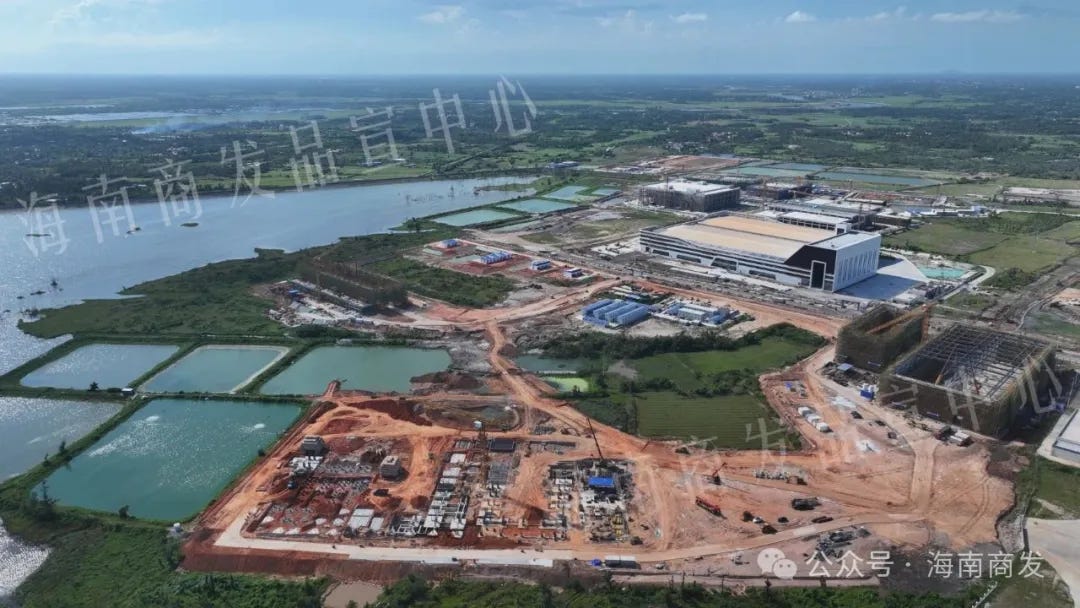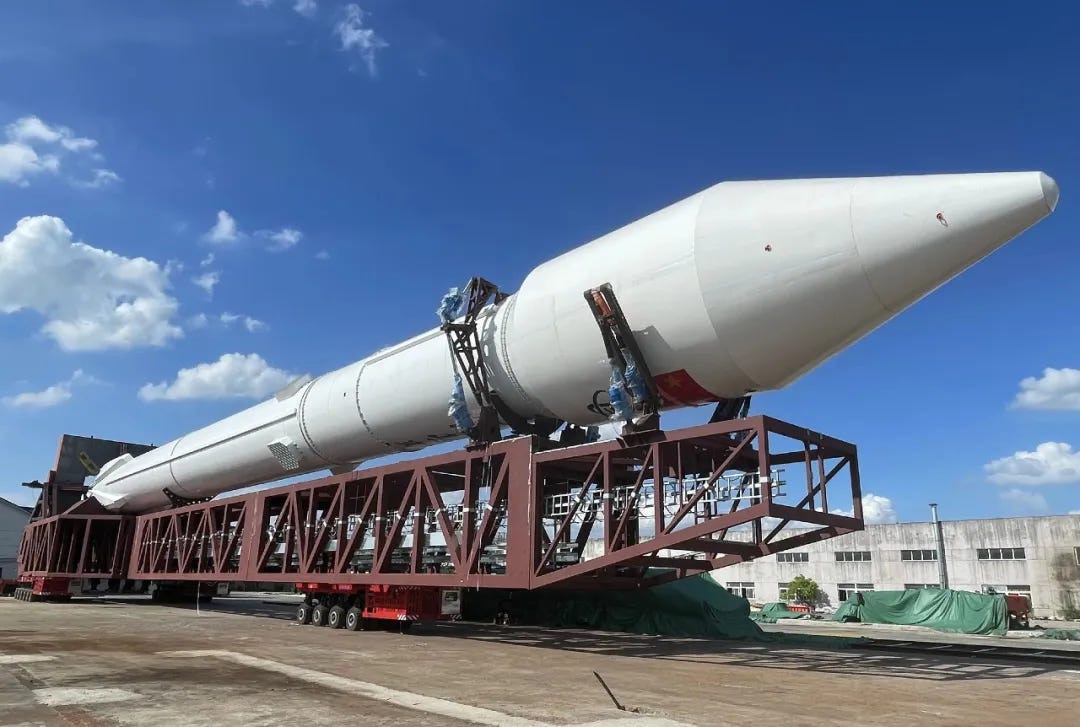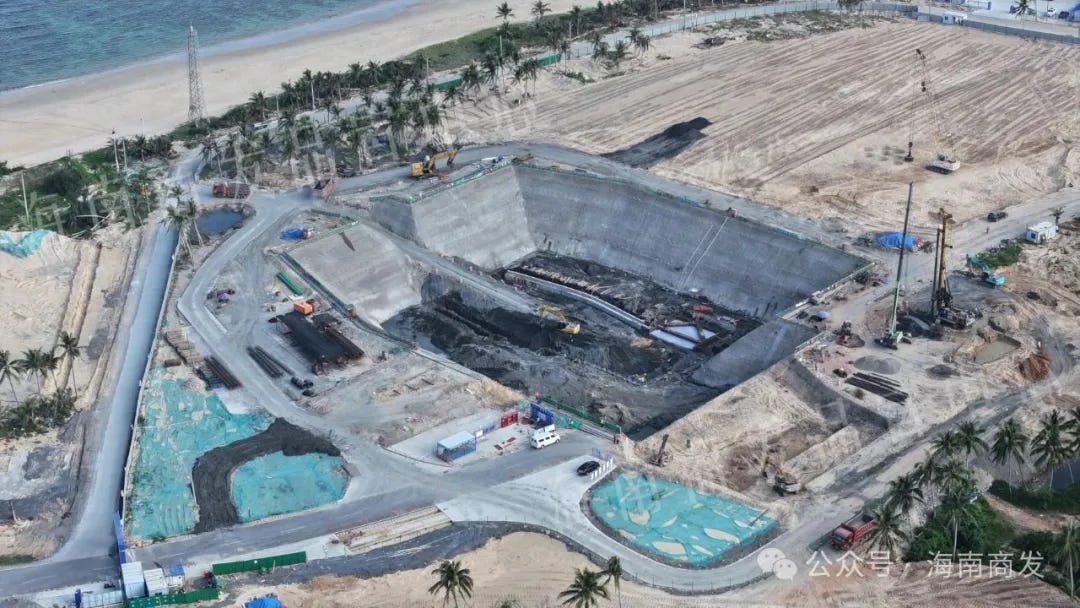Reusable Rocket Infrastructure Undergoes Testing
Meanwhile, constellation services could begin in the near future.
Launch infrastructure for China’s reusable rockets is undergoing final testing ahead of their debut launches, alongside the expansion of the Wenchang launch site to support a future increase in cadence. As well as that, licenses to offer services from China’s internet constellations could be issued soon, while a university reflects a laser off of an American lunar lander.
CAS Space prepares Kinetica-2 launch pad
On August 25th, CAS Space announced that it has concluded commissioning tests for Kinetica-2’s1 launch pad, believed to be called Launch Area 140, ahead of the rocket’s debut in the coming weeks. Around a week earlier, China Central Television shared the first images of Kinetica-2’s mockup on the launch pad.
According to the company, the commissioning tests verified that a Kinetica-2 vehicle can be properly placed and prepped on the launch vehicle’s erector horizontally before being transferred to a vertical position. Once vertical, it was verified that the rocket had been precisely placed onto the launch pad, along with that the erector can detach and swing away ahead of liftoff, followed by laying itself down afterwards.
Launch Area 140 is believed to once again be utilizing CAS Space’s method of doing final integration and testing, after vehicle assembly at a dedicated facility, inside of a rolling hangar that protects the launch vehicle and its erector while horizontal, very similar to what is used with Kinetica-1 on Launch Area 130.
iSpace rolls around Hyperbola-3
iSpace shared on August 23rd that it has completed movement tests of Hyperbola-3’s2 transporter-erector. Those tests were conducted with a mockup of the launch vehicle atop of it.
Technical verification tests conducted with the transporter-erector were said to be placing a vehicle onto it (a mockup this time), securing the vehicle, and moving the transporter-erector around via three groups of self-propelled modular transporters. Simulated launch site tests were also conducted, but no details were provided on how they were performed.
The design of the transporter-erector has a strong resemblance to one in use at the Wenchang Commercial Space Launch Site for Commercial Launch Pad 2, where Hyperbola-3 will fly from.
In June, the company reiterated that Hyperbola-3 is set to perform its maiden flight before the end of the year, previously known to be December with a first-stage booster splashdown. Earlier in the month, iSpace also launched its drone ship, expected to support a downrange booster landing in 2026.
China to issue satellite internet licenses
The IT Times (IT时报) reports on August 25th that Chinese regulators are preparing to issue relevant licenses to allow enterprises to begin offering satellite internet services. Those licenses will be key in allowing the country’s handful of mega-constellations to begin earning a return on investment through selling to consumers.
The Central Government-backed GuoWang (国网) network may be the first to receive a license and begin offering services, through its eighty-one low Earth and three geostationary orbit relay satellites. Services from GuoWang are likely to be greatly improved in the coming few years as around four hundred satellites are planned to be launched by 2027. A source also told the IT Times that, at present, about one hundred satellites will be needed for basic GuoWang services relating to emergency and diplomatic needs. Mobile services may be offered too, through CICT Mobile Communication Technology Co Ltd (中信科移动通信技术股份有限公司).
Meanwhile, it was said that the Shanghai-backed Qianfan (千帆) mega-constellation is likely to receive a license too, despite having just ninety satellites in orbit following a halt of deployments due to technical problems.
Progress continues on Wenchang Commercial phase two
Hainan International Commercial Aerospace Launch Co Ltd (海南国际商业航天发射有限公司), often shortened to HICAL and operator of the Wenchang Commercial Space Launch Site, shared on August 12th that continued efforts in construction for Commercial Launch Pad 3 and Commercial Launch Pad 4, both part of the second phase of expansion, are progressing smoothly.
According to project managers Li Dongjiang (李东江) and Bian Pengfei (边鹏飞), significant milestones have been achieved across both launch pads, following a slowdown due to weather. For Commercial Launch Pad 3, the flame deflector foundation pit has been excavated to over 8 meters below sea level, with support pile construction for the next phase proceeding smoothly. Commercial Launch Pad 4 has also seen its flame deflector foundation pit excavated to about 10 meters below sea level, with support piles completed.
Over in the commercial launch sites’ technical area, launch vehicle maintenance and first stage refurbishment workshops have completed their main structures and are undergoing outfitting for October completion. A solid rocket workshop is expected to have its roof finished this month, with structural work finishing by mid-to-late September.

HICAL still expects phase two of expansion to be completed by September 2026, having recently hosted a meeting with invested enterprises to understand where progress is running into issues, to place them back on track before the end of the month. Expansion of the Wenchang Commercial Space Launch Site began in January of this year.
Sun Yat-sen University lasers Blue Ghost
A team from Sun Yat-sen University (中山大学), in Guangzhou (广州市), Guangdong Province (广东), has managed to detect a return signal from NASA’s Next-Generation Retroreflector-1 (NGLR-1) placed on the Moon by Firefly Aerospace’s Blue Ghost lander, touching down on March 2nd, from its Tianqin Laser Ranging Station (天琴测距台站).
Through the ranging station, seventeen initial measurements were made, followed by thirty-eight distance measurements from the retroreflector. According to the university, their teams, led by engineers Han Xida (韩西达) and Wu Xianlin (吴先霖), detection of the reflector made China the fourth country to do so after France, Germany, and the United States.
Some challenges were faced when detecting the retroreflector, with Han Xida explaining:
“Unlike previous-generation corner reflectors, NGLR-1 is a single, solid object with a 10-centimeter aperture, rather than a spliced assembly. In essence, we must detect this 10-centimeter object amidst the vast lunar landscape. Its smaller target presents greater observational challenges, yet delivers higher precision. It eliminates distance expansion caused by lunar libration effects in previous laser reflectors, providing enhanced ranging accuracy to support long-term research in lunar physics, astrophysics, and cosmology.”
If there are any problems with this translation please reach out and correct me.
Kinetica-2 will initially be an expendable two-stage launch vehicle sending up to 12,000 kilograms into orbit. First-stage reuse is currently planned to be implemented in 2028.
Hyperbola-3 is a two-stage partially reusable rocket, set to carry up to 13,600 kilograms to low Earth orbit.




